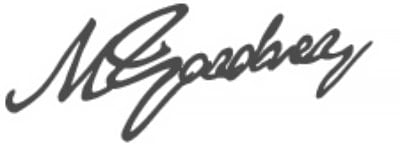
Despite predictions of a downturn, Australia's housing market continued to strengthen, with national house prices rising by 1.0% in March, building on earlier gains from February.
In today’s show Dr. Andrew Wilson explains how capital city rental markets have tightened further, with vacancy rates either falling or remaining at historically low levels, pushing rents upwards.
We also discuss how following Trump's announcement of tariffs, market expectations shifted significantly, suggesting a 90% chance of a rate cut in May.
Takeaways
- Australia's housing market is showing signs of recovery with rising prices.
- Rental markets are tightening again after a period of easing.
- Vacancy rates are approaching record lows, indicating strong demand.
- Affordability barriers may limit rental growth despite high demand.
- Economic factors, including interest rates and tariffs, are influencing market sentiment.
- The auction market is expected to see increased activity leading up to Easter.
- Melbourne's rental market is showing signs of improvement after a downturn.
- International student intake has affected the unit rental market.
- Long-term investment strategies are essential for success in property.
- Market sentiment can significantly impact economic performance.
Home rental markets tightening
Capital city rental markets have continued to tighten into 2025, with low and falling vacancy rates reported generally over March and emerging signs of a resumption in rental growth.
Hobart was the top performer for house rents over March, with a monthly increase of 3.5% followed by Adelaide up 1.2%. Melbourne, Brisbane, Perth and Canberra house rents were steady over the month, with Sydney lower by 0.3% and Darwin down 1.4%.
Sydney continued to report the highest capital city house rents in March, at $798 per week, while Hobart remained the most affordable, at $564 per week.
Most capitals have recorded solid annual increases in house rents, with Darwin the highest, rising 9.3%, Hobart higher by 6.1%, Perth up 5.3%, Adelaide up 5.0%, Brisbane higher by
3.2%, Sydney is up 2.2% and Canberra is higher by 0.5%. Melbourne rents, however, have fallen by 1.7% over the year.
Capital city house vacancy rates were mostly lower again over March with the remainder steady with the exception of Adelaide.
All rates remain at very low levels with the exception of Canberra, and will continue to put upward pressure on rents.

Capital city unit rental markets also remained generally tight over March with vacancy rates mostly falling or remaining steady at low levels.
Darwin was the top performer over the month, with unit rents up by 5.7%, followed by Sydney, which was higher by 1.4% and Adelaide, which was up 1.2%.
Melbourne, Perth, and Canberra were steady, with Hobart down 0.8% and Brisbane lower by 1.2%.
Annual unit rents have increased sharply in Adelaide Darwin and Perth up 10.5%, 9.1% and 8.8% respectively with Hobart up 4.3%, Melbourne higher by 1.7% and Canberra up 0.4%.
Sydney and Brisbane unit rents have been steady over the year to March.
Sydney remains the clear leader for weekly unit rents at $750, with Hobart still the most affordable at $485 per week.
Similar to houses, capital city unit vacancy rates have mostly tightened and remain at very low levels, with the exception of Melbourne and Canberra, each at 2.0%.

Links and Resources:
Get the team at Metropole to help build your personal Strategic Property Plan Click here and have a chat with us
Dr. Andrew Wilson – Chief Economist My Housing Market
Join us at Wealth Retreat - Australia’s Premier Wealth Retreat for Elite Investors and Business People www.WealthRetreat.com.au
Get a bundle of eBooks and Reports at www.PodcastBonus.com.au
Also, please subscribe to my other podcast Demographics Decoded with Simon Kuestenmacher – just look for Demographics Decoded wherever you are listening to this podcast and subscribe so each week we can unveil the trends shaping your future.
Subscribe & don’t miss a single episode of Michael Yardney’s podcast
Hear Michael & a select panel of guest experts discuss property investment, success & money related topics. Subscribe now, whether you're on an Apple or Android handset.
Need help listening to Michael Yardney’s podcast from your phone or tablet?
We have created easy to follow instructions for you whether you're on iPhone / iPad or an Android device.
Prefer to subscribe via email?
Join Michael Yardney's inner circle of daily subscribers and get into the head of Australia's best property investment advisor and a wide team of leading property researchers and commentators.




![[PODCAST] Planning Australia’s Future: It Starts with Where We Live, with Ross Elliott](https://cdn.propertyupdate.com.au/wp-content/uploads/2025/08/713-Planning_Australias_Future-RE-Youtube-cover-270x200.jpg)
![[PODCAST] Renovate to Elevate: Unlocking Value in Investment Properties with Greg Hankinson](https://cdn.propertyupdate.com.au/wp-content/uploads/2025/08/711_Renovate_to_Elevate-GH-Youtube-cover-270x200.jpg)


